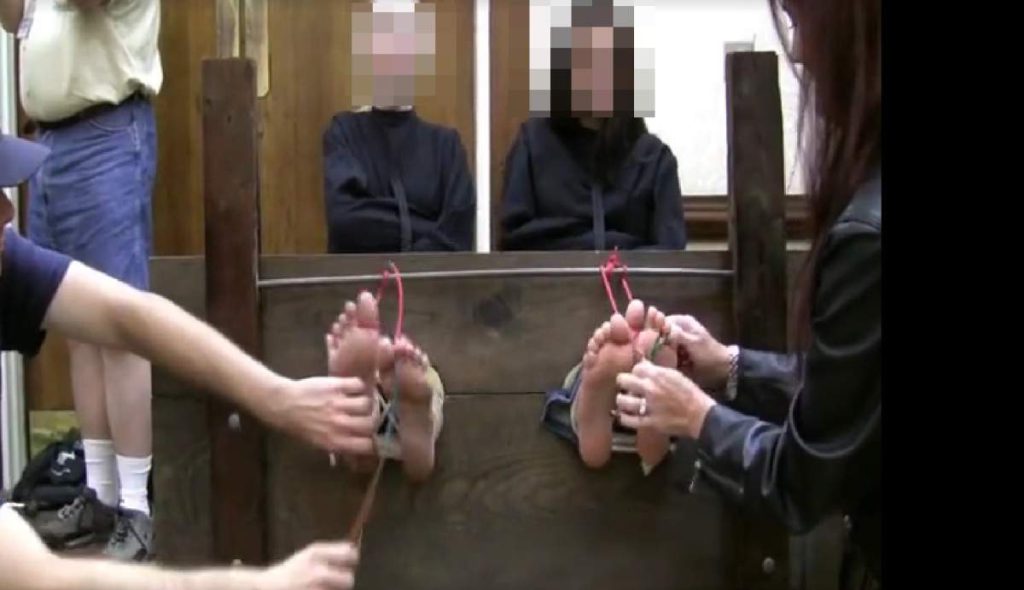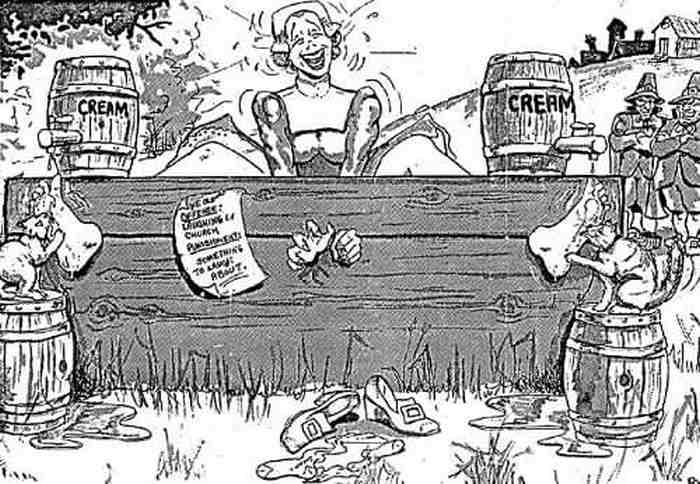Contents
What is the pillory?
The pillory is a historical form of punishment and public humiliation that dates back to medieval times. It was a device used to hold an offender’s head and hands in place, often in a town square or other public area, as a means of exposing them to public ridicule and scorn. Here’s a brief history of the pillory:
The pillory was typically made of wood and consisted of a tall, sturdy post with a series of holes or slots to secure the offender’s head and hands. The wrongdoer would stand in the pillory, and their head and hands would be locked into place, leaving them exposed to the public.
The amount of time a person spent in the pillory varied depending on the severity of their crime and the whims of local authorities. In some cases, the punishment was only for a few hours, while others endured it for days or even weeks.
Frequently mistaken for stocks, pillories were a step up in the hierarchy of medieval punishments. While stocks immobilized the legs, pillories restrained the neck and wrists of the wrongdoer.
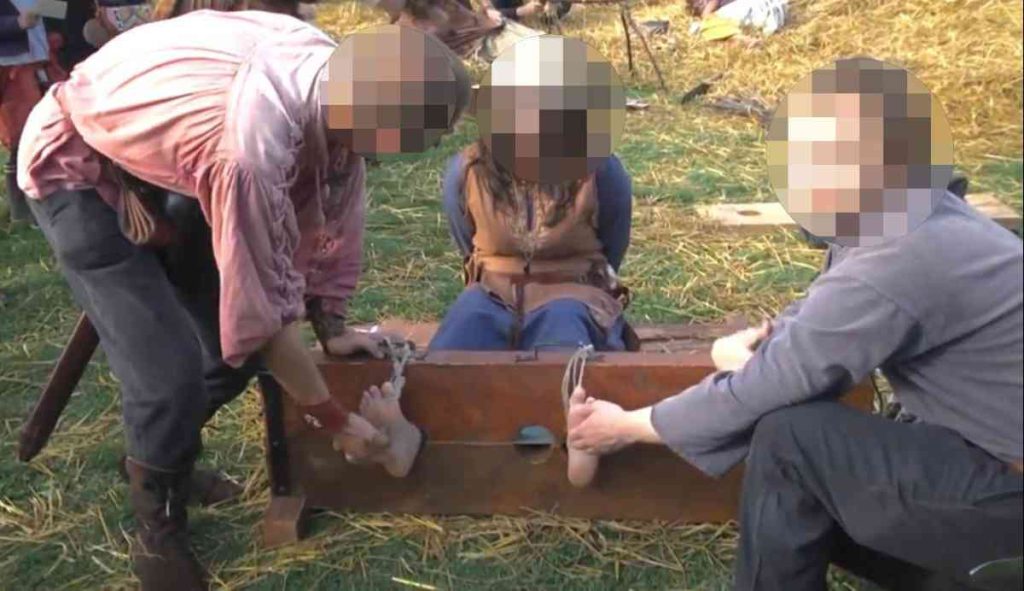
History of the pillory
The stocks, also known as the pillory and stocks, have ancient origins and were used in various cultures throughout history. However, they became more widespread and commonly associated with medieval Europe.
The stocks were initially designed as a form of public punishment and humiliation for offenders who committed minor crimes or acts deemed socially unacceptable.
The stocks typically consisted of a wooden framework with holes or slots to secure the ankles and sometimes the wrists of the wrongdoer. The offender’s legs would be placed in the holes, immobilizing them in a seated or standing position. This exposed the person to public view and ridicule.

In July 1703, the renowned writer Daniel Defoe faced the pillory for three consecutive days. This punishment was imposed on him after the publication of his work titled “The Shortest Way with the Dissenters,” which was considered seditious libel. As described by Richard Cavendish in History Today, Defoe endured an hour each time in three bustling locations in London: near the Royal Exchange in Cornhill (close to his residence), by the conduit in Cheapside, and finally, in Fleet Street near Temple Bar.
It was common that manure was taken from black wells to smear his hair, nose, mouth, or stones was thrown to him, or it was burned, or inflicted injuries then covered with salt. Sometimes his feet would be only tickled.
Source
As societies evolved, the use of the pillory came under scrutiny, and criticism grew over its effectiveness and ethics. Critics argued that the pillory was a cruel and inhumane punishment, and it did not effectively deter crime. As a result, many countries began to phase out its use in the 18th and 19th centuries.
Tickle torture: the humiliation of pillory
Once in the pillory, the offender would endure various forms of public humiliation and punishment.
The pillory was considered a lesser form of punishment than those applied in the past: however, it was a cruel instrument designed specifically to humiliate the victim.
The prisoner was placed in a position where everyone could see him and with no way to move.
People such as vagrants and drunks were placed in the stocks so that everyone could denigrate them, such as by throwing vegetables at them. In some cases it was specified that only light objects should be thrown, to prevent the condemned person from being beaten to death.

Passersby were encouraged to mock, insult, and even throw objects at the person in the pillory. It was a spectacle meant to degrade the offender, and sometimes, the punishments could become severe if the crowd became violent.
Those who wanted to humiliate and make the victim suffer would arrange to remove her shoes and socks and tickle him/her feet.
The victim then could do nothing but squirm and laugh in front of the crowd that witnessed the punishment.
The punishment is doubly humiliating since the tickling forces the victim to laugh without really wanting to, and this behavior makes him look ridiculous in front of the viewers.
The body feels threatened when touched in vulnerable parts such as the feet and armpits and tries to evade the touch. The pillory is meant to leave arms and feet immobile, so the victim tries futilely to protect himself, while the spectators watch him fidget in an uncomfortable manner and laugh at his reaction.

According to etymologists, the term “laughing stock,” defined by the Oxford English Dictionary as “an object of general ridicule,” is unlikely to have originated from the use of stocks.
The stocks were particularly favoured for any torture of the feet. For example, roasting the victim’s feet in front of a fire, and the bastinado (beating the soles of the feet). More subtlety, Chinese torturers would put their victims in the stocks and tickle their feet continually until they confessed.
Source
In 2016, the town of Thame in Britain gained global attention when it considered a proposal to construct stocks within its limits. The idea was that the stocks could be used for hire as well as charitable events. “Perhaps for charity, we could arrange something fun, like having individuals sit in the stocks while others donate money based on the duration they withstand having their feet tickled and syrup poured between their toes, all in good humor.”

Tickle torture in pillory in popular culture
Movies
In “Me and Marlborough” (1935) a woman is put on stock and suddenly a dog starts to tickles her soles, making her giggling. The other two women don’t understand the situation and say to her: “It’s not a laughing matter!”

Animation
In “Albert the Fifth Musketeer” (Anatole’s treasure) a count is tickle tortured on pillory to make him reveal the location of a treasure.
In “Clarence” season 2 episode 7: Ren Faire, a man is tickled in a renfaire event while he’s on stocks.

Comics
Looney Toons
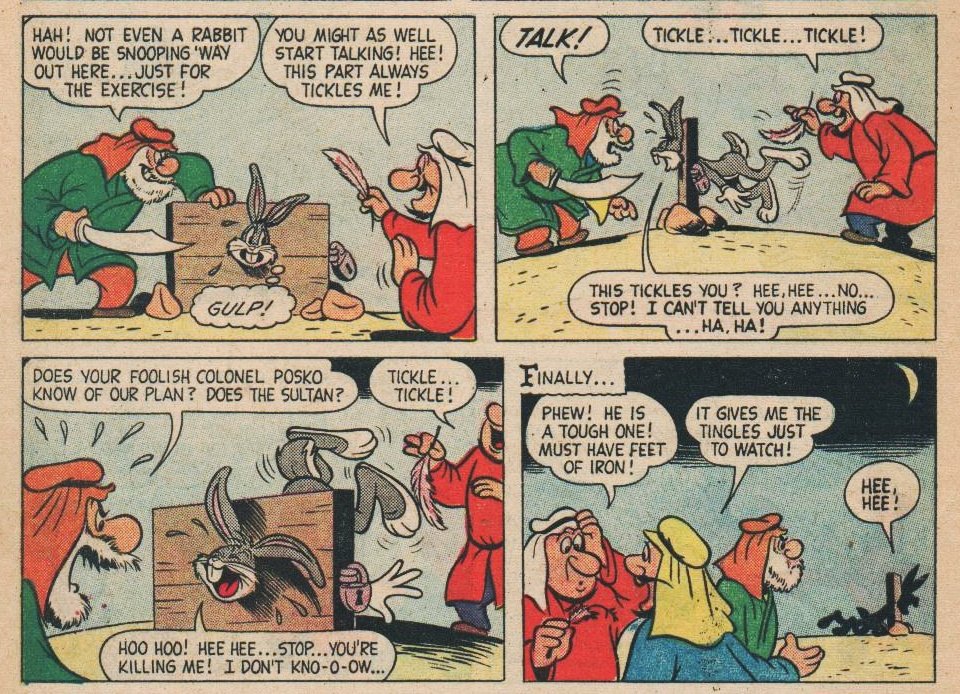
TV Series
Batman: Caped Crusader
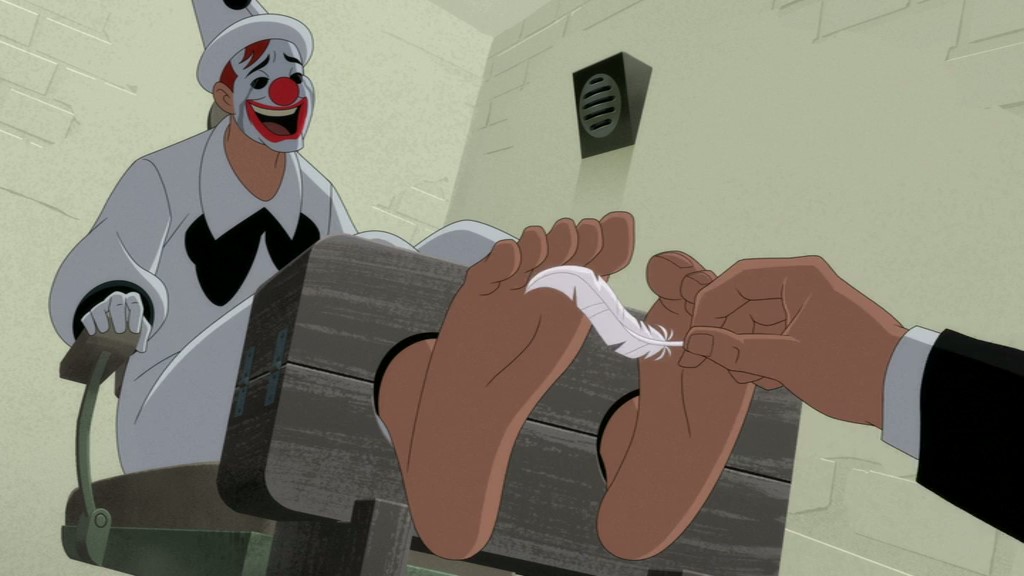
TV Shows
Gethin Jones is tickled on stock in “Blue Peter” show.
A girl is tickled in stock in “Venga la Alegria“

Siege of Canelli
The Siege of Canelli was a famous Italian event in which pillory tickling was used.
The organizers’ purpose was to reenact the climate of menace that hung over the poor victims, in keeping with the medieval event, but in a fun and light-hearted way.
The victims-almost always women-were chosen from those who did not possess a certain pass (“tiletto”).
The theatrics involved them being locked in the pillory under false accusations of being witches or spies, and deprived of stockings and shoes.
The jailers, pretending to interrogate them, would first begin by tickling them on the ribs and under the armpits. Then they would move on to tickle them with feathers under their feet and finally to scratch the soles of their feet with their fingers.
The woman would usually burst into a lot of laughter and admit that she was a spy or a witch. If the woman was not ticklish and laughed, a sign was placed on her that read ” intorturable.”
To top it off, the jailers would pretend to write a pass on the victim’s feet with a quill pen, then misspell it and erase it, causing the woman to be further tickled and laugh, before releasing her.
Bosa Turistika
Bosa Turistika offers a form of audience entertainment for events based on the ancient torture of the pillory.
Visitors, barefoot, are pinned to a pillory while another person tickles them underfoot with a feather.
It is a popular and novel attraction at public festivals (you can see it at festivals with historical themes, especially in France, Spain, Portugal and now also in the Czech Republic). The torture instrument is a feather and so the common denominator of the log experience is to experience the feeling of defencelessness, relaxation, the pleasant sensation of tickling the feet, to have fun or to take an original photo.

T.L.T. Productions
T.L.T. Productions realizes videos of girls locked in colonial stocks and pillories while wearing tights.
Some girls are tickle tortured on their tights clad feet by their friend’s merciless fingernails







BAC’s artwork
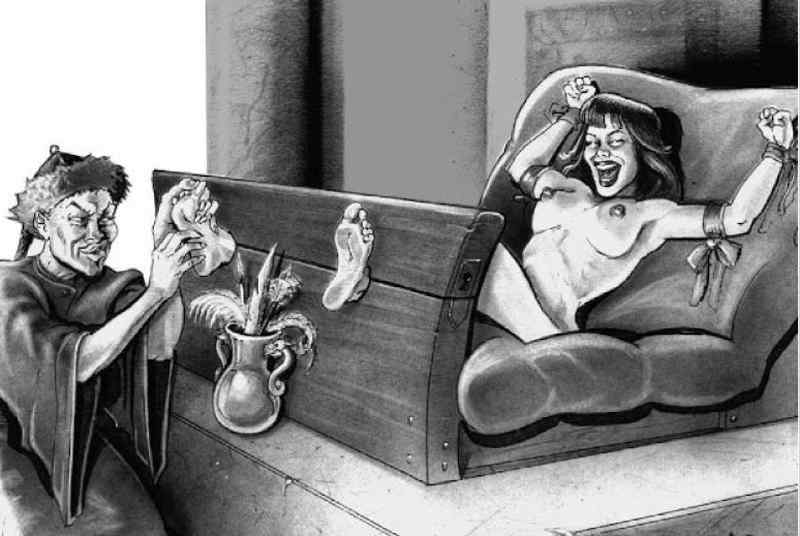
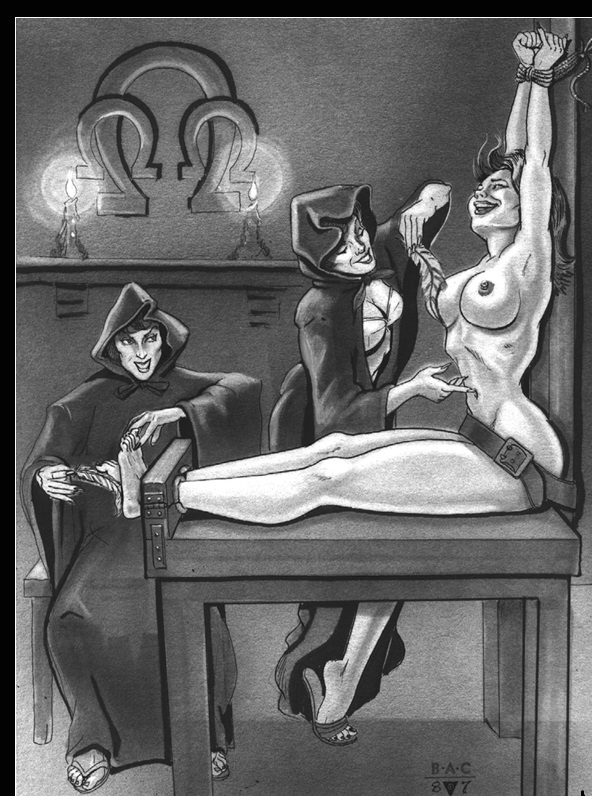
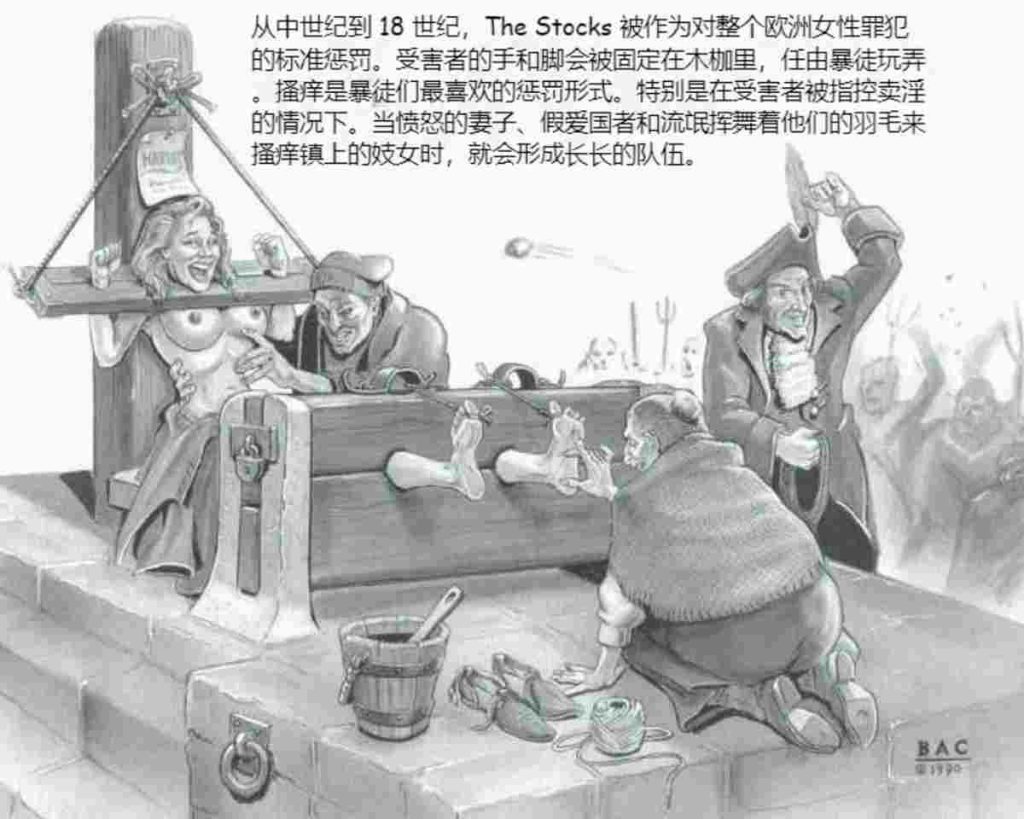



FTKL’s artworks
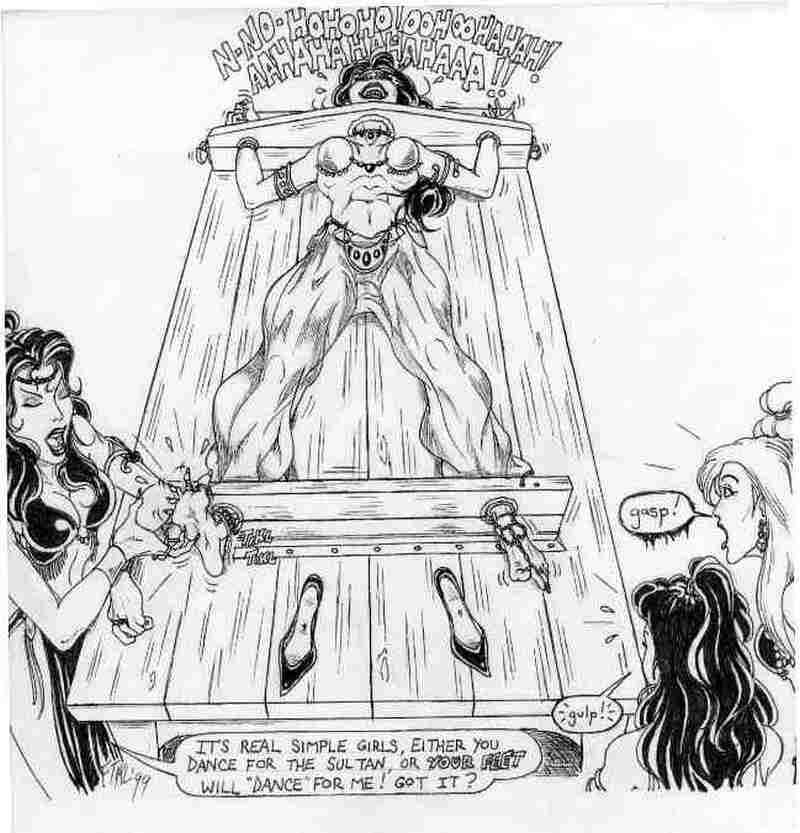

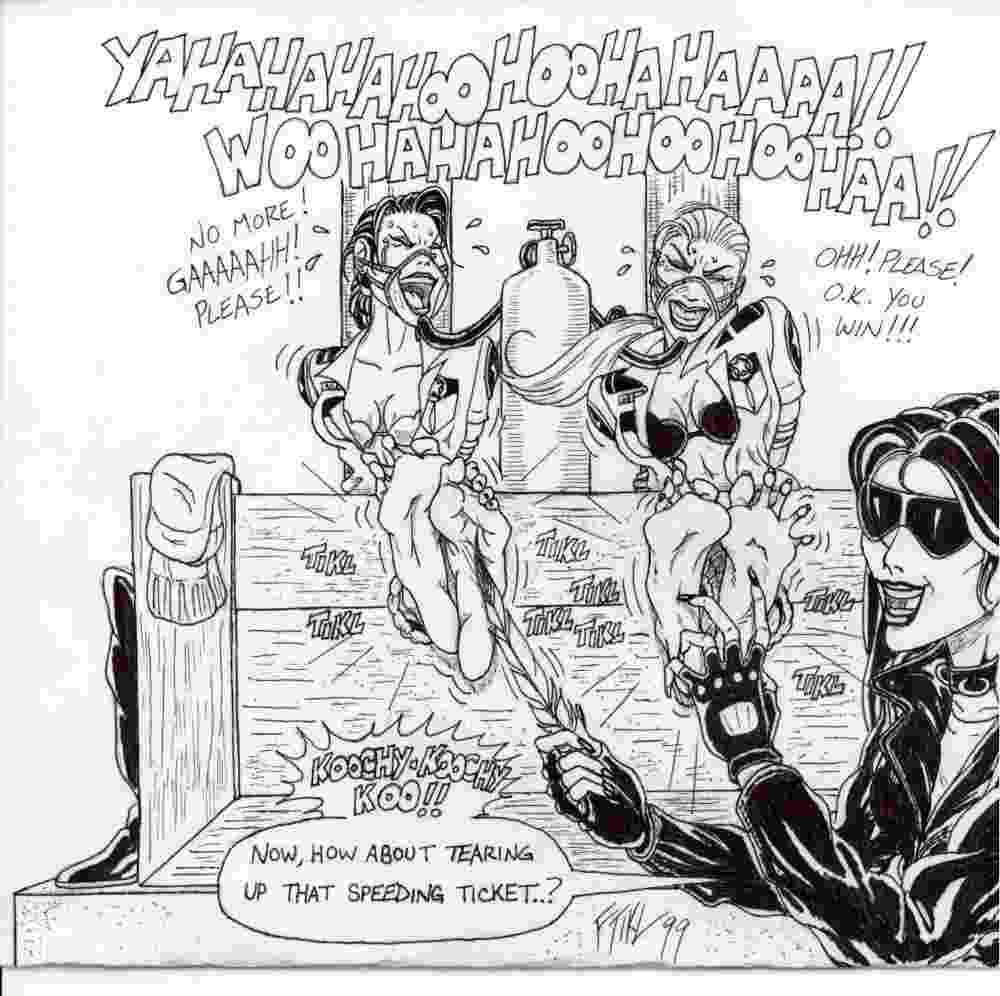
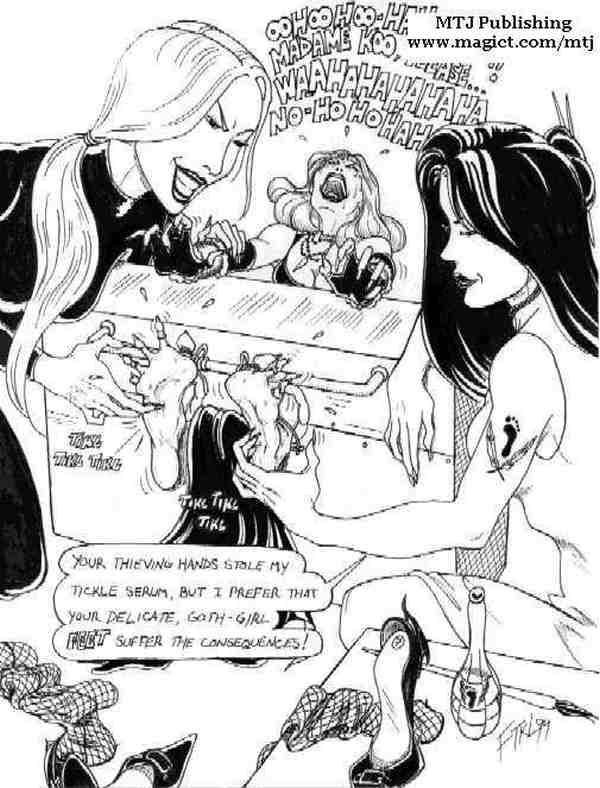
Yenny by Dave Alvarez


MTJPub Comics
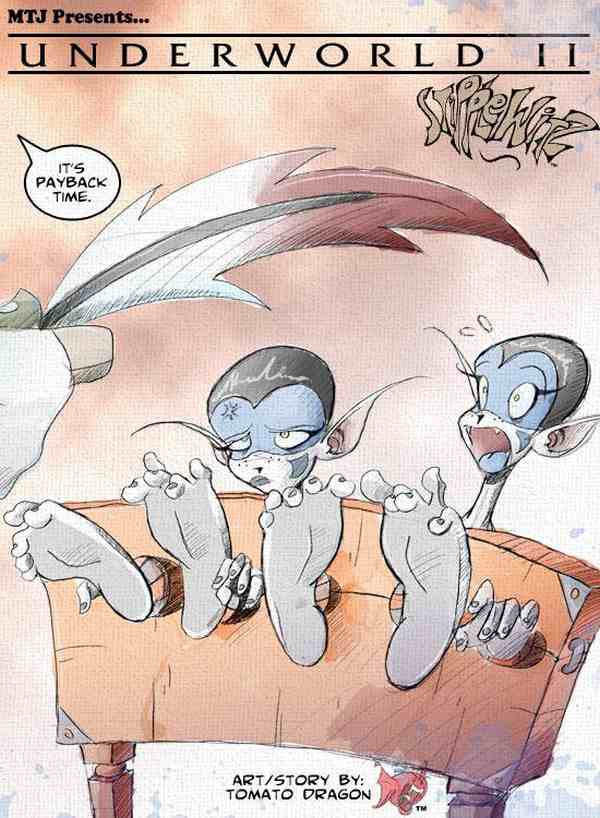





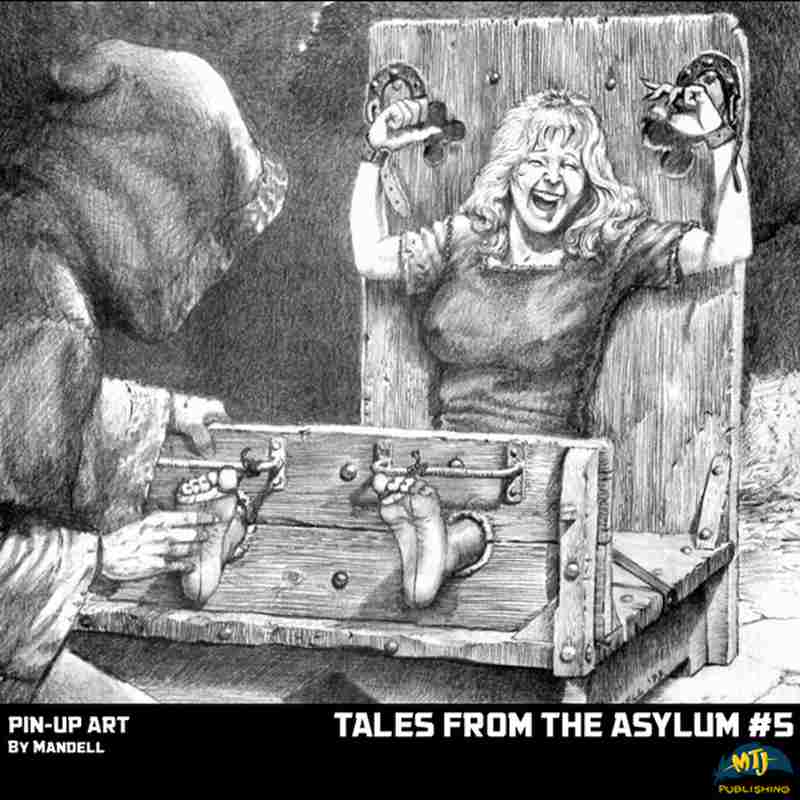







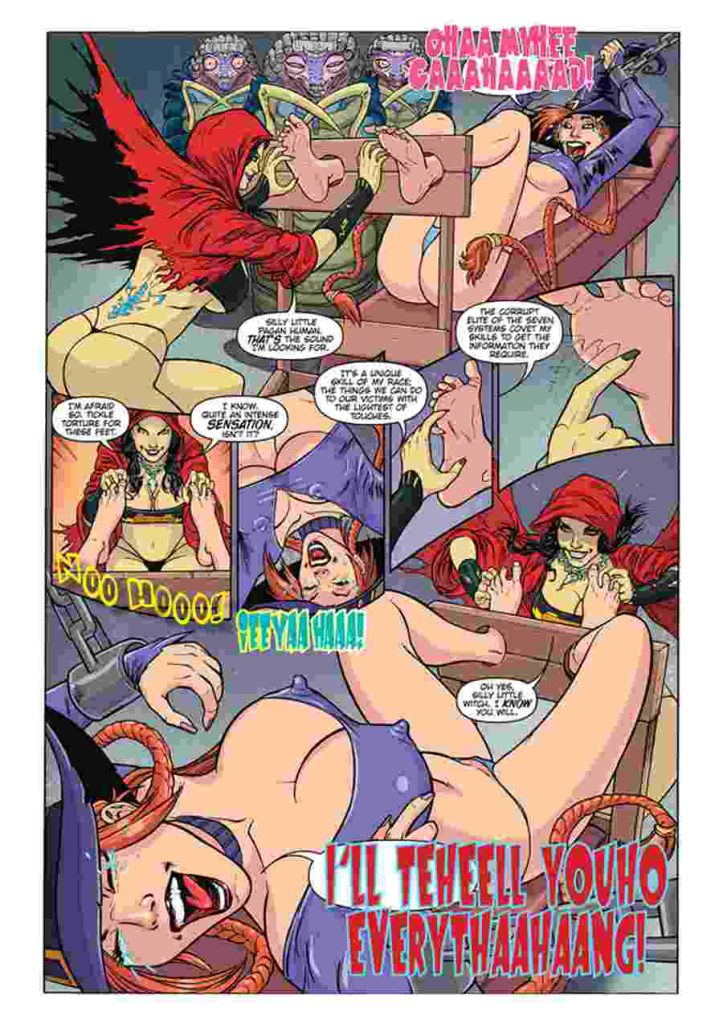



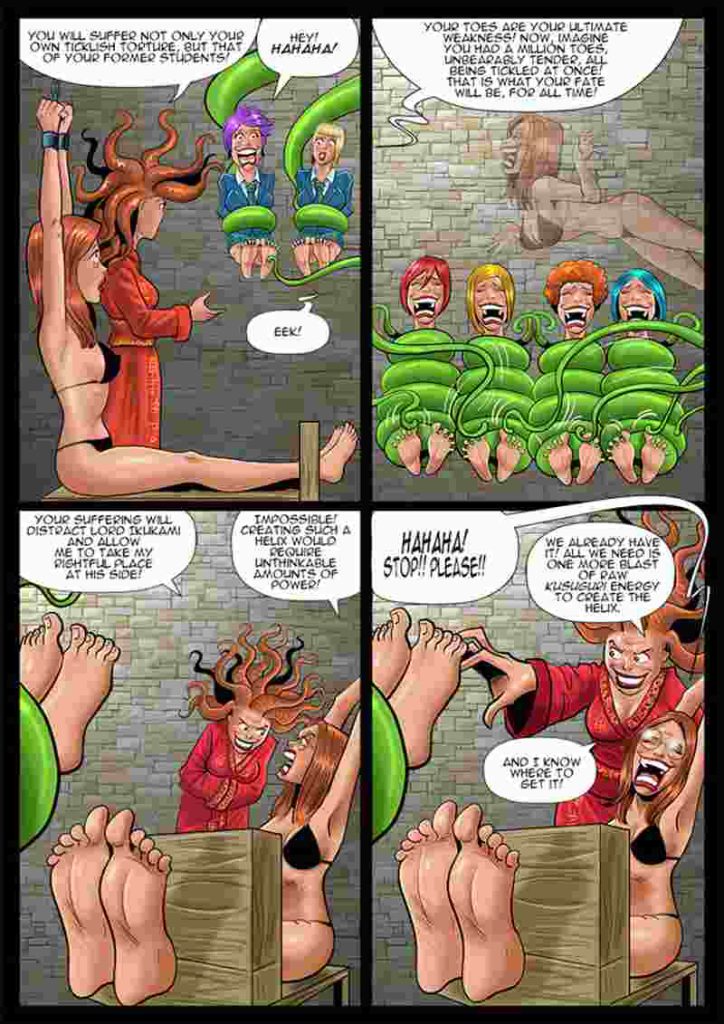



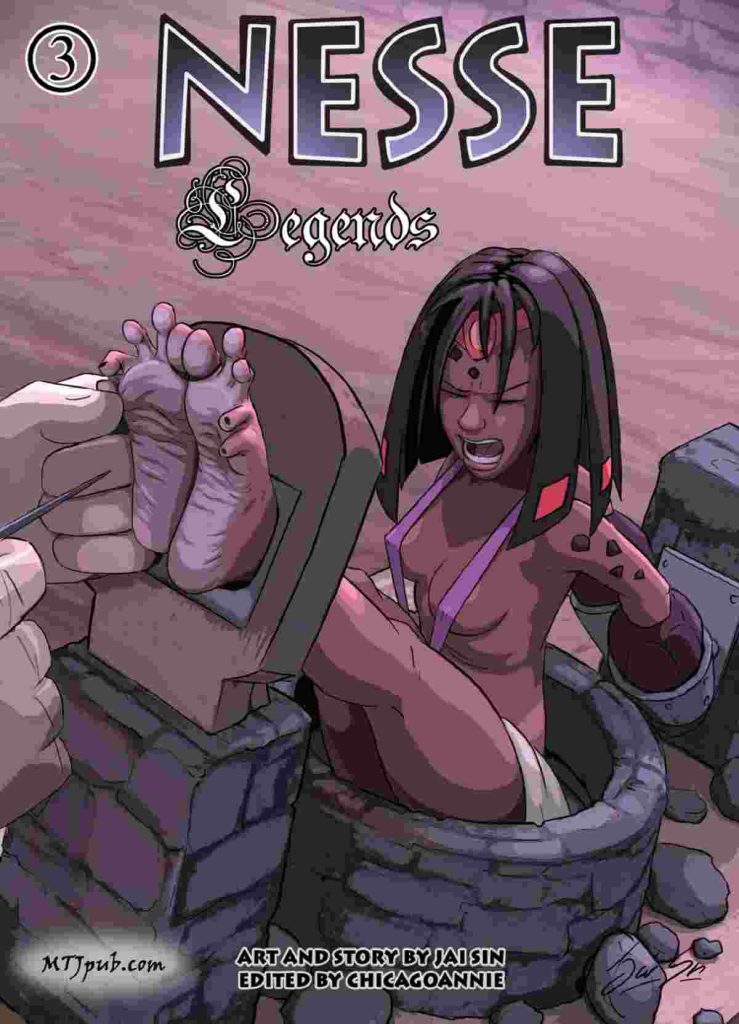


Agency Publishing



Various artists



Modern video and photo productions
